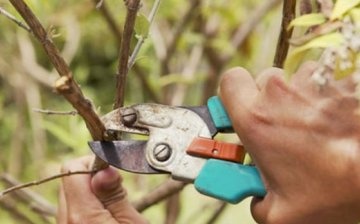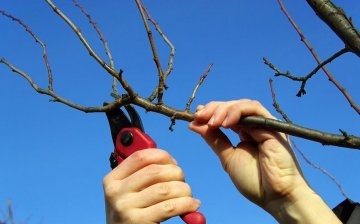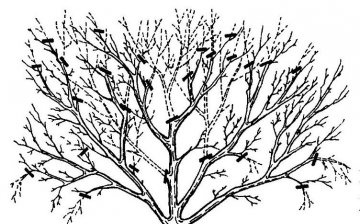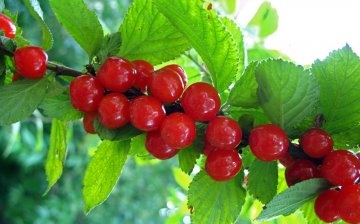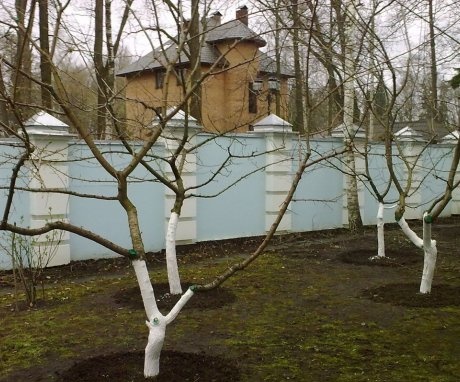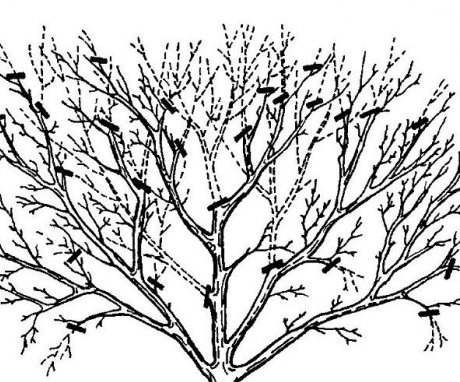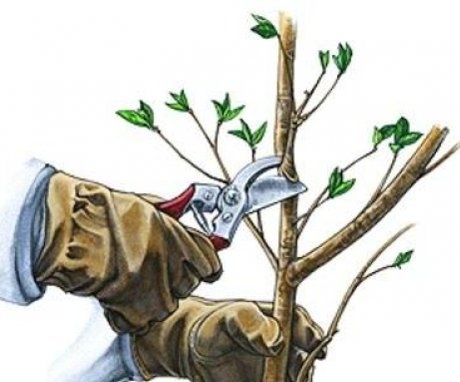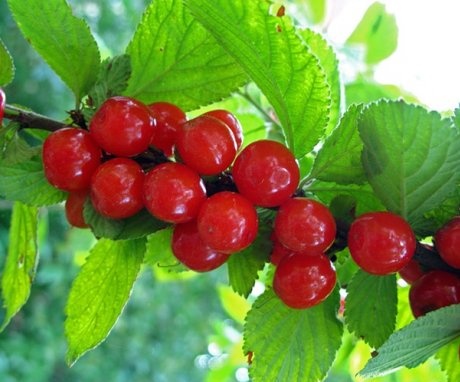Rules and guidelines: how to prune cherries in spring
Cherries produce incredibly tasty and valuable berries. Now cherry is widely popularized, there are many varieties. To get a high-quality and large harvest, it is necessary to prune correctly and in a timely manner. With the help of pruning, you can regulate the growth of the tree, the timing and volume of fruiting, etc.
Content:
- How does it all start?
- Rules and guidelines
- How to shape a cherry crown
- Pruning young and old trees
- Felt Cherry Pruning
How does it all start?
Cherries you can start pruning with the arrival of early spring in the event that the winter was relatively warm. Usually this time falls on the second half of March, when there is still a little snow, but there is no need to be afraid of night frosts.
If it snowed or rained on the selected day, it is better to refrain from pruning, because this will only complicate the workflow, and the wounds in the trees will heal worse. After an excessively cold winter, pruning may not be carried out at all, or it may be done only after sap flow.
Pruning should be done before the buds become too swollen.
Pruning too late will cause a large amount of nutrient loss to occur, which will eventually weaken the tree. In the event that pruning in early spring did not work out, then there is still a chance to fix everything in late May - early June.
Rules and recommendations for pruning cherries in the spring
Any culture has its own distinctive features of pruning, which, of course, is associated with the fruiting process. Experts recommend pruning young cherry trees a year after planting. This will help correct crown formation and prevent thickening.
Branches that grow inward need to be pruned.
Young shoots appearing on the trunk, break off in the summer or a year later in the spring. To prevent the growth of the tree in height, shoots need to be cut off those that grow upward. In cherry varieties that grow in bushes, branches longer than 50 cm are pruned. To give the crown the required shape, several lateral shoots are left on the main trunk. For prevention purposes, it is necessary to cut off damaged and dry branches.
How to shape a cherry crown
How to prune cherries correctly:
- Form the crown cherries within five to six years after planting.
- A bush cherry is left with about 8 main branches, a tree-like one - about 6. Taking into account that the upper part of the trunk should be 20 cm higher than the tips of these branches.
- The branches that grow upward must be cut off at the branch point and left directed towards the peripheral part of the crown.
- The height of the trunk should be approximately 40 cm, because this is the most vulnerable spot in cherries.
- It is possible to shorten the growth only in young trees up to three to four years. Overgrown root shoots cause weakening of fruiting, so it must be removed periodically, but only in grafted trees.
- Trees in the fruiting period, taking into account the good growth of the shoots, can only be thinned out, cut out the extra branches into the ring.
There is such a thing as "rejuvenating pruning", which means pruning the branches when the growth is reduced to 15 cm. The main branches must be shortened above the first lateral branch.You will also need more serious pruning if the branches ended about two or three years ago.
Such branches are cut off to the place where the growth of lateral branches has ended.To prevent gum flow, you need to clean and cover the resulting wounds with garden varnish. You also need to remove hemp in place of the cut branches, otherwise they can slow down the healing of wood wounds.
Pruning young and old trees
Young cherries are pruned immediately after planting, which will help the gardener create the necessary crown shape, as well as help the roots easier to transfer the planting and adapt to the new site, because remote branches do not need to be supplied with nutrients. It is necessary to plant seedlings and remove branches even before bud formation. Saplings are cut so that about five well-developed skeletal branches remain on them.
Excess growths are cut off, and the wounds on the trunk are covered with oil paint or, as mentioned above, with garden varnish.
Uncut branches should be 10 cm apart. In the spring, it is necessary to ensure that the shrub does not overgrow, and the crown is formed correctly. Branches growing inward must be removed. Shoots growing on the headquarters should be cut out.
To control the growth of young trees, you need to shorten them from the top. In shrubs, it is better to remove shoots longer than 50 cm. During the entire growth of the cherry tree, new branches should be left until there are more than fifteen of them. Pruning must be done very carefully and carefully, otherwise you can harm the future growth and fruiting of the tree. Any carelessness and mistake can lead to a decrease in yield.
Prune old trees you also need in a special way:
- They are pruned to rejuvenate and increase yields.
- It will be necessary to rejuvenate the formation of the crown of shrub varieties if the branches become bare, and the tree begins to bear much less fruit.
- Productivity is restored by reducing the number of branches and shortening them by one third or half their length.
- In addition to shoots, the main branches must be removed to the point of bud formation.
- Skeletal and semi-skeletal branches must be removed in different seasons, otherwise the tree can be significantly weakened and yield reduced.
- Annual growths are strictly forbidden to cut off.
Pruning a tree variety for anti-aging purposes is done in a completely different way. Annual shoots are slightly shortened, due to which new branches and lateral branches grow, which will also bear fruit perfectly. It is necessary to rejuvenate the crown if the skeletal branches are bare at their base.
When pruning old cherries, you cannot cut off too many shoots at one time, this must be done in several stages and over several years.
Felt Cherry Pruning
Felt cherries need to be pruned annually. This is due to the fact that it is this culture that is distinguished by its ability to quickly thicken. Most of the harvest is formed on annual shoots, which is why shoots that reach 60 cm in length are cut off by one third. When pruning branches, you need to leave about 15 well-developed shoots. Old, dried and damaged branches must be removed.
The rejuvenating pruning of perennial shrubs of the felt variety allows you to get a large harvest throughout the life of the cherry.
Some of the gardeners still believe that pruning cherries is a futile exercise that will only harm the tree. And others generally believe that this will reduce the harvest. But, all this is completely wrong.
It is imperative to prune trees, this will only help him grow and develop better. And every self-respecting gardener should know the subtleties of this process.
More information can be found in the video.



